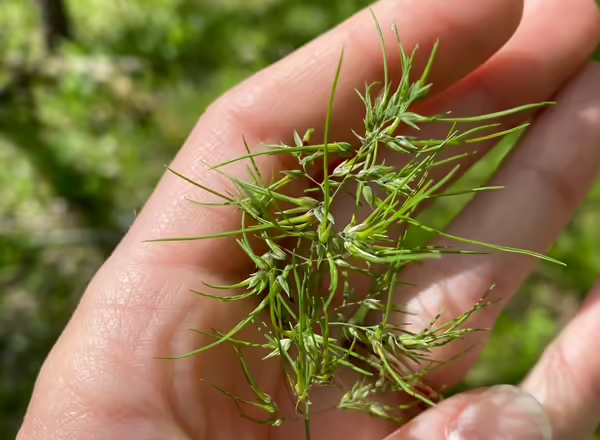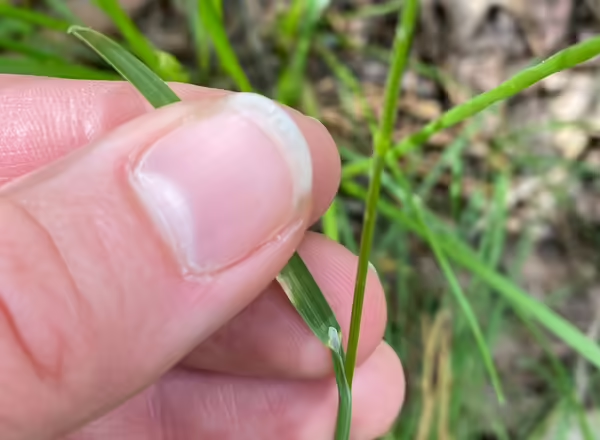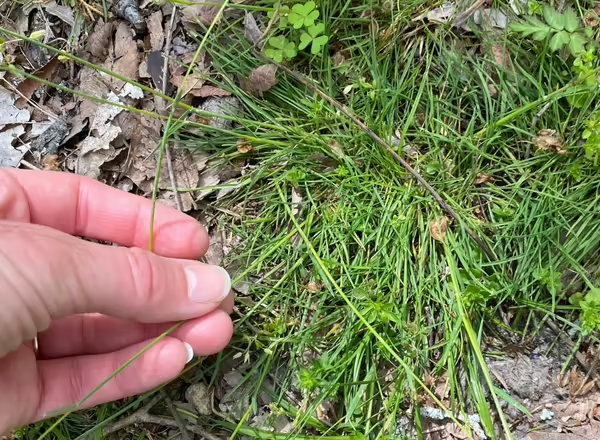Bulbous Bluegrass, Poa bulbosa, is a non-native, weedy grass that can be found in disturbed areas. It is one of 18 different species of bluegrass that can be found in Illinois. The bluegrasses share many characteristics that make it easy to tell them apart from other types of grasses.
Identifying bluegrasses
Bluegrasses have a few general characteristics:
- Cool-season grasses
- Short grasses that often grow in clumps
- Thin, linear leaves
- Keeled leaf tips (shaped like the tip of a canoe)
- Membranous ligules
- Panicle inflorescences
- About a third of the grasses in this genus found in Illinois are native to Europe and Asia
Telling apart Bulbous Bluegrass
Bulbous Bluegrass fits all the characteristics listed above: it is a short bunchgrass with thin leaves that have keeled or boat-shaped leaf tips. You can find a tall membranous ligule at the base of the leaf blade. As far as the bluegrasses go, this might be one of the easiest ones to identify if you find it in bloom because the seeds of this grass, held in panicles, are swollen at their base, leading to the name bulbous. One of the pieces of the spikelet, called a glume, is uncharacteristically long and pointy, looking like a grass blade emerging from the base of the spikelet or like a long awn.
This grass is weedy, and can spread in more disturbed areas. If you find it in your garden or lawn, weed it out before it can spread.
Need a refresher on grass identification terms, like ligule and spikelet? Check out this blog post!


